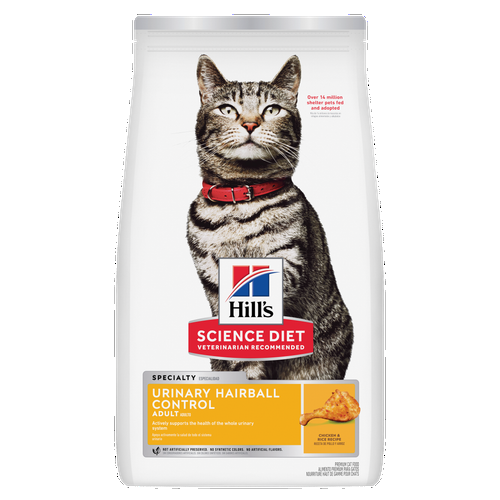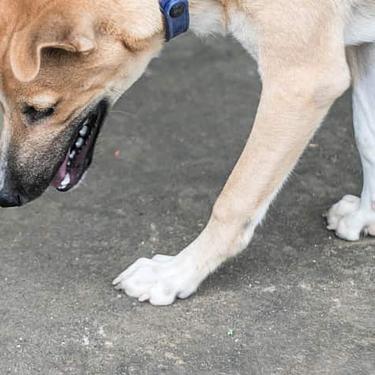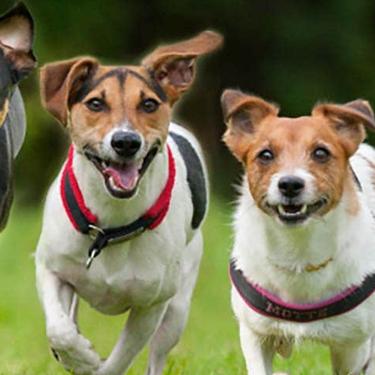
-
Find the right food for your petTake this quiz to see which food may be the best for your furry friend.Find the right food for your petTake this quiz to see which food may be the best for your furry friend.Featured products
 Adult Small & Mini Lamb Meal & Brown Rice Recipe Dog Food
Adult Small & Mini Lamb Meal & Brown Rice Recipe Dog FoodFor the faster metabolism of Small & Mini dogs
Shop Now Hill's Science Diet Adult Oral Care Chicken, Brown Rice & Barley Recipe Dog Food
Hill's Science Diet Adult Oral Care Chicken, Brown Rice & Barley Recipe Dog FoodClinically proven kibble technology to reduce plaque & tartar build-up
Shop Now Adult 7+ Small & Mini Chicken & Brown Rice Recipe Dog Food
Adult 7+ Small & Mini Chicken & Brown Rice Recipe Dog FoodFor the unique nutritional needs of mature Small & Mini dogs
Shop NowFeatured products Adult Urinary Hairball Control Chicken & Rice Recipe Cat Food
Adult Urinary Hairball Control Chicken & Rice Recipe Cat FoodActively supports the health of the whole urinary system
Shop Now Hill's Science Diet Adult Sensitive Stomach & Skin Dog Food
Hill's Science Diet Adult Sensitive Stomach & Skin Dog FoodHighly digestible recipe, gentle on stomachs. Nourishes skin & promotes a lustrous coat
Shop Now Adult Indoor Chicken Recipe Cat Food
Adult Indoor Chicken Recipe Cat FoodSupports energy level and beautiful fur in indoor cats
Shop Now -
Featured articles
 My Pet Ate a Lizard — What Should I Do?
My Pet Ate a Lizard — What Should I Do?Learn what to do if your pet eats a lizard, including whether they can be toxic and symptoms to keep an eye on when they've swallowed one.
Read More Easy DIY Dog & Cat Toys: Nine of Our Favorites
Easy DIY Dog & Cat Toys: Nine of Our FavoritesBrowse this comprehensive guide for several of our favorite DIY dog and cat toys that are sure to put a little pep in your pet's step.
Read More 15 Pet-Friendly Cities Ideal for a US Road Trip
15 Pet-Friendly Cities Ideal for a US Road TripCheck out our list of pet-friendly U.S. cities that are excellent travel options, offering off-leash dog parks and pet-friendly restaurants & hotels.
Read More -


You love spending time with your dogs, and as fun as a dog obstacle course would be, it can seem unattainable. Luckily, you may already have the materials and equipment for a homemade course around the house. It doesn't matter if your dog has no practice or if you have no experience training. So many simple tricks are easy for you to teach on your own. Start your course with simple jumps, weave poles, and tunnels, and you'll both look like professionals in no time.
There are a few things to consider before creating a dog obstacle course. First, make sure you have enough space for each trick you set up (and extra room around it for safety). Anything you design should be easily broken down as well, so your dog doesn't get injured when practicing. Be patient with his training and you'll both have a positive experience.
Jumping Obstacles
Jumping is a great first activity to teach your dog if you're both new to obstacle training. And if you have a laundry basket and a curtain rod, you have all the tools you need to make short, beginner jumps for your buddy.

Any extra PVC pipes or cups left over from a plumbing project? These make for a perfect DIY dog obstacle course building tool. The best way to set up a jump is with movable rungs so that you can easily raise or lower the height at whichever level your dog is learning. For help on creating a jump from PVC pipes, here are some from Instructables.
Do you have a hula hoop or a poodle "noodle"? Both of these are soft and collapsible enough to use in a jumping obstacle. When first training your pup, you can simply hold the circle at the desired height while signaling your dog to jump through.
All jumping obstacles need to be collapsible. You don't want your pup to get injured if he can't make it through.
Weaving Obstacles
Do you have small orange cones from when your children played soccer? These would make a perfect weaving course for your dog obstacle course. Set the cones up the way you'd arrange them for a pickup football or soccer game.
Have you ever used poles that look like candy canes to decorate your home for the holidays? If so, perfect! Though he's obviously taller than the cones, your dog will clearly understand the weaving path with these lightweight poles.
You want your weave poles to be secure enough that they don't fall over every time your dog darts past one. Similar to the jumps, however, they should be lightweight enough for him to stay unharmed if he runs into one. Don't space them too close together or too far apart.
Start slow by letting him walk through the cones before trying to get him to run. You can either train him by walking him on a leash through each of the cones rewarding him when he completes the task, or you can hold out a treat and have him follow it through the cones. Be sure to use consistent verbal or hand commands when training so that he will associate your commands with the actions you are asking of him.


Tasty Tips
Tunnel Obstacles
There are many options for creating a tunnel with household items. Do your children have play tunnels they've since outgrown? These lightweight collapsible corridors are perfect for dog training. Plus, when you aren't using them they can be stored easily and take up very little room.
Dogs who are completely new to tunnel training could find the same enjoyment in a cardboard box with the bottom removed. You might need to provide extra support to the box when your pup is using it. You can always start with shorter tunnels, no more than four or five feet in length, until he gets used to the idea of walking through it.
If your dog has never practiced any agility training before with tunnels, he may be hesitant to try it. Just be encouraging. Get on your hands and knees, go through the tunnel yourself, and your dog will follow. You can also try placing treats at the front, middle and end of the tunnel to encourage your new athlete to go through. Again, with all other training, be consistent in your verbal commands to help your pup understand that you want him to go through the tunnel.
Ramps
Ramps can be another fun addition to your dog obstacle course. Some large plywood and cinder blocks can make a simple ramp for him to race up and down, but be certain that they are secure and will withstand your dog running up or down them without shifting to help keep him safe.
Change Things Up
As your pooch starts to get a hang of things and makes it through each obstacle simply following your verbal commands or hand gestures, change up the order of the obstacles. This will help him better understand that each obstacle has its own commands, rather than simply following the same path he learned on.
Want to make things a little more fun? Add in a couple of additional extra features to your canine obstacle course, such as having him fetch a tennis ball for you at the end or jump into a kiddie pool to retrieve a floating toy. If you're practicing in the warm summer months, consider adding some sprinklers to the course to keep him cool-- just be careful to avoid getting the ramps wet so he doesn't slip and hurt himself.
However you decide to set up your obstacle course, your dog will enjoy all the fun that it brings. Plus, it will help give him needed exercise and you'll get endless joy watching him bound from obstacle to obstacle. After a while you can start to time him and see how quickly he can maneuver the course; you never know, he might just turn into a professional.


One of our staff authors prepared this article for you
Related products

Improves everyday ability to get up & go

For the unique nutritional needs of mature Small & Mini dogs

Clinically proven kibble technology to reduce plaque & tartar build-up

For the faster metabolism of Small & Mini dogs
Related articles

Your dog's coat and skin are a big part of your dog's overall health. Ensure you keep your dog's coat healthy, by following these simple tips.

Discover how the field of dog science is giving us more and more insights into the inner workings of our furry best friends.

Understand the role that Omega-6 and Omega-3 fatty acids play in your dog's overall health, and how you can ensure they are getting enough.

Learn basic steps & precautions for treating a cut on your dog, including what you can put on the cut, and when you should take them to the vet.

Put your dog on a diet without them knowing
Our low calorie formula helps you control your dog's weight. It's packed with high-quality protein for building lean muscles, and made with purposeful ingredients for a flavorful, nutritious meal. Clinically proven antioxidants, Vitamin C+E, help promote a healthy immune system.
Put your dog on a diet without them knowing
Our low calorie formula helps you control your dog's weight. It's packed with high-quality protein for building lean muscles, and made with purposeful ingredients for a flavorful, nutritious meal. Clinically proven antioxidants, Vitamin C+E, help promote a healthy immune system.

